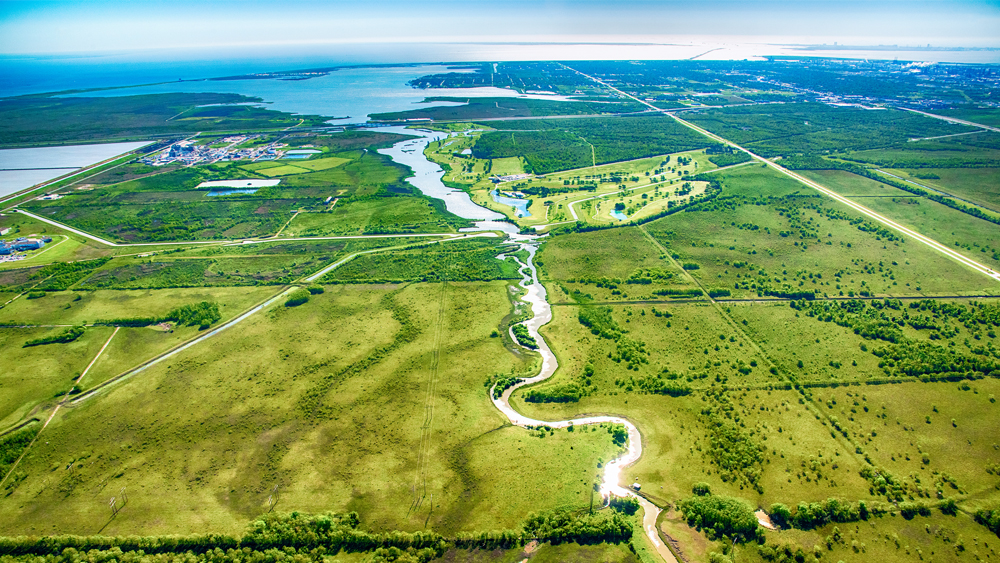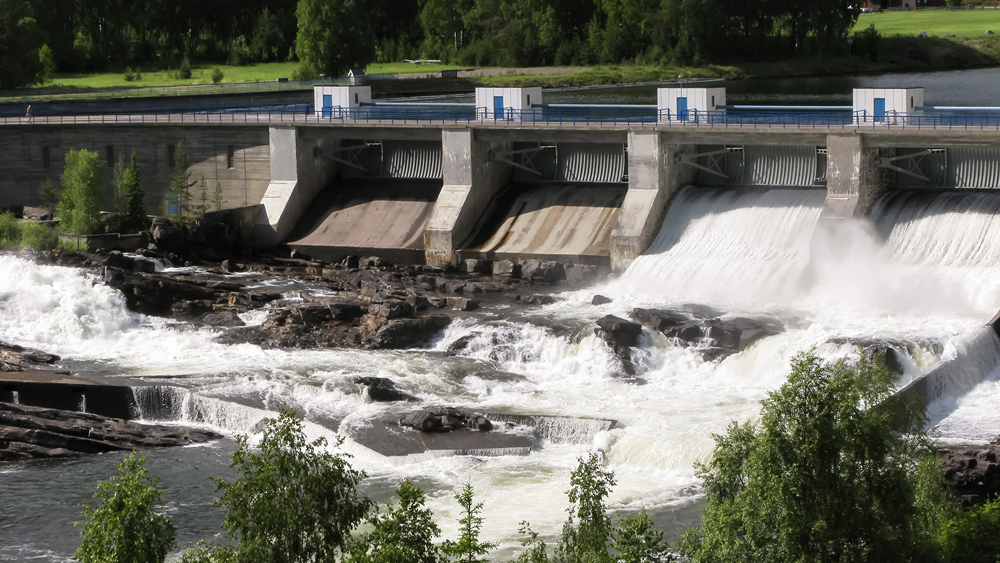
The Water Rights Analysis Package (WRAP) modeling system developed by Dr. Ralph Wurbs is applied by river authorities and other water management entities in operational planning studies. |
Image: Getty Images
Over the last month, some parts of Texas have been inundated with rain. But more than 36% of the state is still experiencing moderate, severe and extreme drought conditions.
As the state moves into the hot summer months and drought season, water management will be at the forefront for water stakeholders.
The Water Rights Analysis Package (WRAP) modeling system has contributed significantly to improving water management in Texas over the past two decades. Dr. Ralph Wurbs, senior professor in the Zachry Department of Civil and Environmental Engineering at Texas A&M University, developed WRAP with his graduate students under the sponsorship of the Texas Water Resources Institute (TWRI), the Texas Commission on Environmental Quality (TCEQ) and other state and federal agencies.
WRAP provides comprehensive capabilities for simulating river system hydrology and water resources development, allocation, management and use, and performing reliability and frequency analyses with simulation results. The modeling system is applied to assess hydrologic and institutional water availability and reliability in satisfying needs for reservoir storage, water supply, environmental instream flows, hydroelectric energy and flood control. WRAP is generalized for application any place globally.
The Water Availability Modeling (WAM) system maintained by the TCEQ consists of WRAP datasets for all river basins in Texas. Twenty WRAP input datasets covering Texas simulate the operation of 3,400 reservoirs and other constructed facilities, 6,200 water-right permits, the effects on water availability in Texas of five interstate river basin compacts, and two U.S./Mexico treaties and other institutional arrangements.
Senate Bill 1 (SB1), article VII of the 75th Texas Legislature in 1997 authorized the creation of the WAM system under the leadership of the TCEQ and a regional planning process administered by the Texas Water Development Board (TWDB). Sixteen regional water plans and a consolidated statewide plan are updated in five-year planning cycles under the 1997 SB1. The 2017 water plans accessible on the TWDB website are being updated with 2021-22 plans. TCEQ approval of water-rights permits requires consistency with relevant regional plans.
TCEQ staff employ the WRAP/WAM system in evaluating water-rights permit applications to assess water availability and reliability from the perspectives of both the permit applicants and impacts on other water users. Permit applicants or their consultants apply the modeling system in preparation for water rights applications. TWDB staff and 16 regional water planning groups, with the support of consulting engineering firms, utilize the WRAP/WAM system in statewide and regional water planning.
As the state moves into the hot summer months and drought season, water management will be at the forefront for water stakeholders.
The Water Rights Analysis Package (WRAP) modeling system has contributed significantly to improving water management in Texas over the past two decades. Dr. Ralph Wurbs, senior professor in the Zachry Department of Civil and Environmental Engineering at Texas A&M University, developed WRAP with his graduate students under the sponsorship of the Texas Water Resources Institute (TWRI), the Texas Commission on Environmental Quality (TCEQ) and other state and federal agencies.
WRAP provides comprehensive capabilities for simulating river system hydrology and water resources development, allocation, management and use, and performing reliability and frequency analyses with simulation results. The modeling system is applied to assess hydrologic and institutional water availability and reliability in satisfying needs for reservoir storage, water supply, environmental instream flows, hydroelectric energy and flood control. WRAP is generalized for application any place globally.
The Water Availability Modeling (WAM) system maintained by the TCEQ consists of WRAP datasets for all river basins in Texas. Twenty WRAP input datasets covering Texas simulate the operation of 3,400 reservoirs and other constructed facilities, 6,200 water-right permits, the effects on water availability in Texas of five interstate river basin compacts, and two U.S./Mexico treaties and other institutional arrangements.
Senate Bill 1 (SB1), article VII of the 75th Texas Legislature in 1997 authorized the creation of the WAM system under the leadership of the TCEQ and a regional planning process administered by the Texas Water Development Board (TWDB). Sixteen regional water plans and a consolidated statewide plan are updated in five-year planning cycles under the 1997 SB1. The 2017 water plans accessible on the TWDB website are being updated with 2021-22 plans. TCEQ approval of water-rights permits requires consistency with relevant regional plans.
TCEQ staff employ the WRAP/WAM system in evaluating water-rights permit applications to assess water availability and reliability from the perspectives of both the permit applicants and impacts on other water users. Permit applicants or their consultants apply the modeling system in preparation for water rights applications. TWDB staff and 16 regional water planning groups, with the support of consulting engineering firms, utilize the WRAP/WAM system in statewide and regional water planning.

Water management in Texas is driven by dramatic spatial and temporal hydrologic variability, continual rapid population growth, intensifying demands on surface water resources and declining groundwater supplies. |
Image: Getty Images
WRAP is applied by river authorities and other water management entities in operational planning studies. The modeling system has been used in university and agency research studies to explore various water management issues.
“Water management in Texas is driven by dramatic spatial and temporal hydrologic variability, continual rapid population growth, declining groundwater supplies and intensifying demands on surface water resources,” Wurbs said.
Hydrology varies from the extremes of devastatingly intense floods to costly multiple-year droughts, along with seasonal and less severe random between-year and within-year fluctuations in precipitation and streamflow. Limited water resources are allocated among many interacting water users and types of use in an environment of extreme hydrologic variability and future uncertainty.
The continually evolving WRAP modeling system has been implemented in Texas by a water management community that includes the state legislature, planning and regulatory agencies, river authorities, water districts, cities, industries, engineering consulting firms and university researchers.
“The shared modeling system has significantly contributed to the effective integration of the planning, regulatory and system operations responsibilities of the Texas water management community,” Wurbs said.
Research and development at Texas A&M to create, expand, improve and employ the WRAP modeling system has been underway continuously since before the 1997 SB1, which significantly accelerated improvements in water management practices, including increased reliance on computer-based modeling and analysis. An expanded version of WRAP released in May 2019 includes improved capabilities for integrating legislatively mandated environmental flow standards, periodically updating hydrology datasets, simulating reservoir flood control operations and better supporting drought management. A January 2021 release further refines capabilities for simulating environmental flow standards.
“The May 2019 and January 2021 WRAP software and manuals expand the monthly modeling system also to include daily modeling capabilities with monthly-to-daily naturalized flow disaggregation, flow routing, forecasting, flood control reservoir operations and instream flow standards with subsistence, base and pulse flow components,” Wurbs said.
WRAP software, six manuals published as TWRI technical reports, other relevant publications, and datasets are available at the WRAP website. A set of online courses was added to the website in June 2021 to further assist model users in achieving proficiency in applying WRAP.
Wurbs was the recipient in 2019 of the inaugural Research and Innovation Award of the American Academy of Water Resources Engineers (AAWRE) for his contributions in developing and implementing the WRAP modeling system. The AAWRE is a specialty area advanced accreditation institute affiliated with the American Society of Civil Engineers.
According to Wurbs, the generalized WRAP modeling system reflecting flexibility and practicality necessitated by its evolution within the progressive Texas water management community can significantly improve water management throughout the world. Former students who worked with WRAP during their graduate studies at Texas A&M have played leadership roles in implementing the modeling system in Texas. Likewise, professionals introduced to the modeling system during their graduate studies at Texas A&M are instrumental in expanding the use of the modeling system worldwide.
“Water management in Texas is driven by dramatic spatial and temporal hydrologic variability, continual rapid population growth, declining groundwater supplies and intensifying demands on surface water resources,” Wurbs said.
Hydrology varies from the extremes of devastatingly intense floods to costly multiple-year droughts, along with seasonal and less severe random between-year and within-year fluctuations in precipitation and streamflow. Limited water resources are allocated among many interacting water users and types of use in an environment of extreme hydrologic variability and future uncertainty.
The continually evolving WRAP modeling system has been implemented in Texas by a water management community that includes the state legislature, planning and regulatory agencies, river authorities, water districts, cities, industries, engineering consulting firms and university researchers.
“The shared modeling system has significantly contributed to the effective integration of the planning, regulatory and system operations responsibilities of the Texas water management community,” Wurbs said.
Research and development at Texas A&M to create, expand, improve and employ the WRAP modeling system has been underway continuously since before the 1997 SB1, which significantly accelerated improvements in water management practices, including increased reliance on computer-based modeling and analysis. An expanded version of WRAP released in May 2019 includes improved capabilities for integrating legislatively mandated environmental flow standards, periodically updating hydrology datasets, simulating reservoir flood control operations and better supporting drought management. A January 2021 release further refines capabilities for simulating environmental flow standards.
“The May 2019 and January 2021 WRAP software and manuals expand the monthly modeling system also to include daily modeling capabilities with monthly-to-daily naturalized flow disaggregation, flow routing, forecasting, flood control reservoir operations and instream flow standards with subsistence, base and pulse flow components,” Wurbs said.
WRAP software, six manuals published as TWRI technical reports, other relevant publications, and datasets are available at the WRAP website. A set of online courses was added to the website in June 2021 to further assist model users in achieving proficiency in applying WRAP.
Wurbs was the recipient in 2019 of the inaugural Research and Innovation Award of the American Academy of Water Resources Engineers (AAWRE) for his contributions in developing and implementing the WRAP modeling system. The AAWRE is a specialty area advanced accreditation institute affiliated with the American Society of Civil Engineers.
According to Wurbs, the generalized WRAP modeling system reflecting flexibility and practicality necessitated by its evolution within the progressive Texas water management community can significantly improve water management throughout the world. Former students who worked with WRAP during their graduate studies at Texas A&M have played leadership roles in implementing the modeling system in Texas. Likewise, professionals introduced to the modeling system during their graduate studies at Texas A&M are instrumental in expanding the use of the modeling system worldwide.